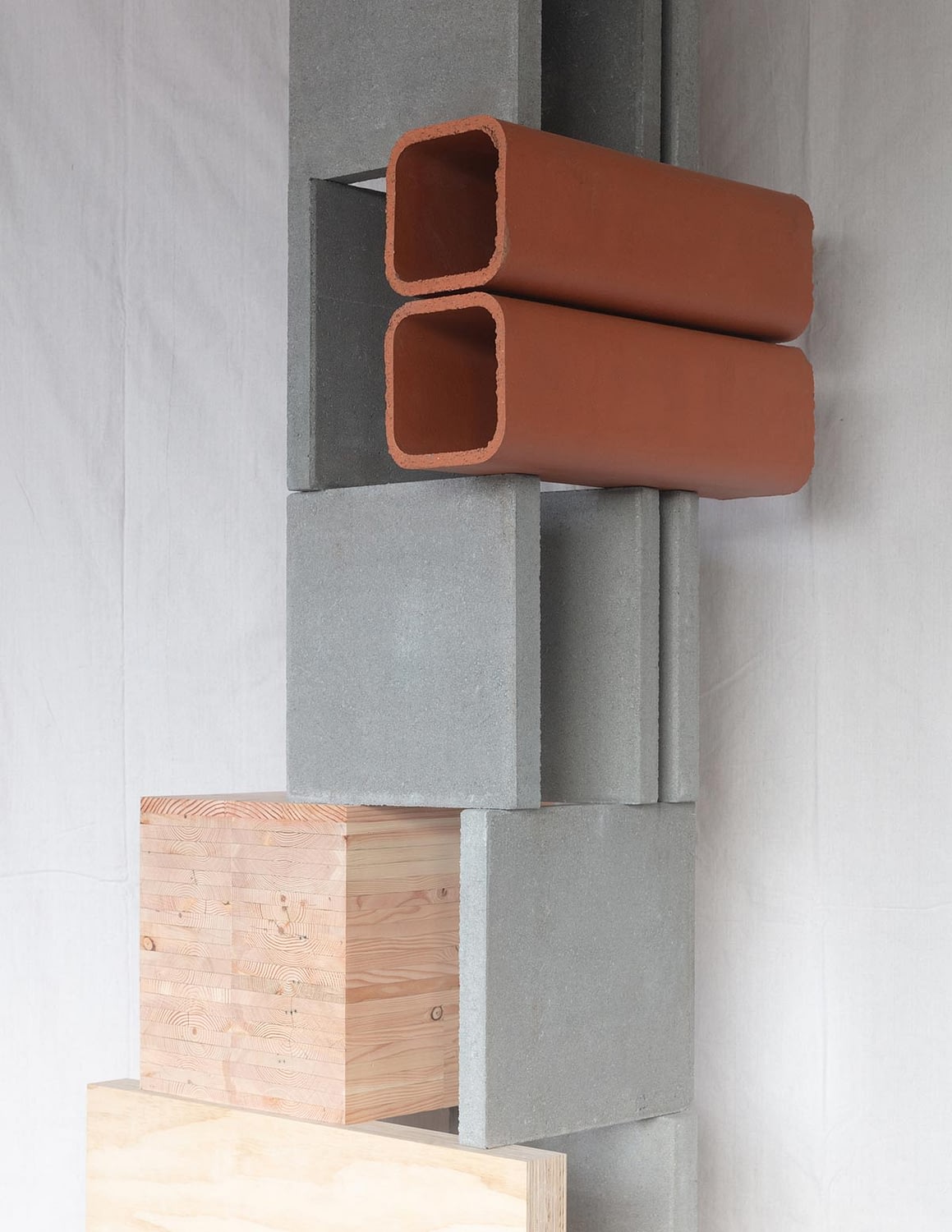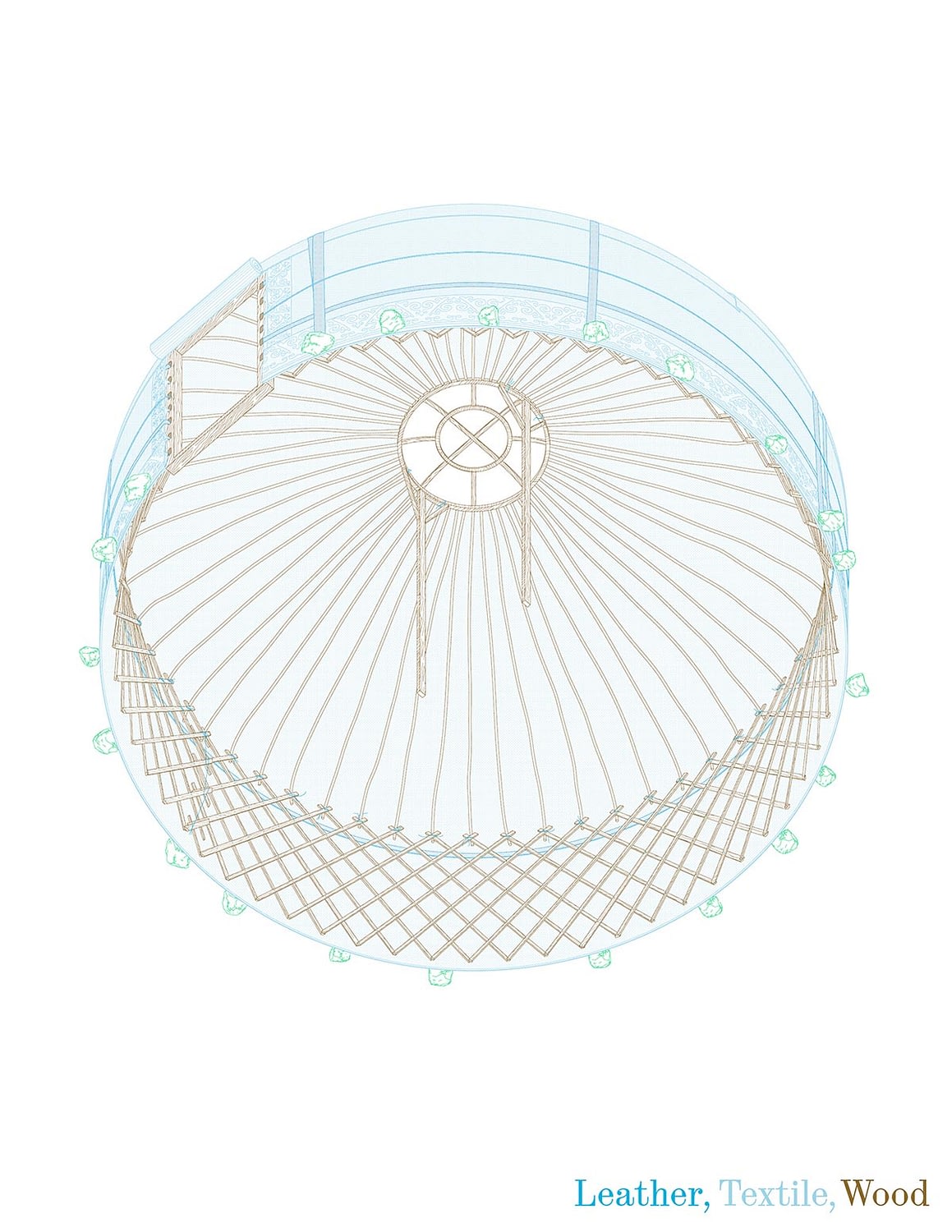Thu 15 Sep
18:00
Aaron Forrest, Ultramoderne
Yasmin Vobis, Harvard GSD
Sticks and Stones and an Atlas of Heterogenous Constructions
Since the advent of modernism and the rise of concrete and steel as dominant materials in building construction, a curious condition has emerged within architectural material discourses, which, almost uniformly, seek to define, celebrate, and advocate for specific single materials at the exclusion of others. But material heterogeneity in architectural structures is deeply rooted in building cultures from around the world, and has only diminished with the parallel rise of industrialized construction relying on the precise calculability of behavior of steel, concrete, and industrially-processed wood.
Sticks and Stones is a collaborative effort between two architects and a structural engineer to examine material heterogeneity as both a historical condition and a generator for contemporary design exploration. The project accepts from the start that buildings are heterogeneous agglomerations of varied materials impacted by economic, social, and regulatory forces from without, and seeks to make these relationships both explicit and generative within the design process from technical, ecological, social, and aesthetic vantage points.
The project currently pursues three primary lines of investigation:
- A photographic atlas of heterogeneous construction that draws together built examples from a wide range of historical epochs and global cultures, with an emphasis on ancient, vernacular, and early-industrial architectures.
- A series of analytical drawings of exemplary constructions.
- A series of constructed, prototype building elements that translate heterogeneous construction methods through the lens of contemporary, off-the-shelf construction materials.
This paper will present this work as a means of exploring the history of heterogeneous construction methods as well as the implications of these methods for contemporary architecture and construction.
We will further discuss the opportunities and challenges associated with this type of approach, including issues of sustainability, local material sourcing, and the implications for practice, engineering, and regulation. At the simplest level, the reliance of many examples on local and found materials provides a model for the use of reclaimed and upcycled material. More significantly, heterogeneous construction offers compelling precedent for the complementarity of high- and low-embodied energy materials, as well as high- and low-tech construction techniques in industrialized construction.
While heterogeneous construction presents many opportunities in terms of sustainability, cultural value, and aesthetic promise, its applicability can be limited given conditions like structural ambiguity arising from the assemblies that resist common methods of structural modeling and calculation. While structurally ambiguous assemblies can be evaluated through empirical testing, the process can be cumbersome. A renewed culture of heterogeneous construction may require a parallel reform of building regulation.
The conflict between the clear social value of heterogeneous construction and their nonconformance to idealist aesthetic and technical theories demands a reconsideration of some of the basic assumptions of contemporary construction. We will present heterogeneous construction as a methodological framework that is at once deeply historical and of critical contemporary relevance, and which has the potential to challenge our tendency to reduce construction to a series of received systems. The heterogeneous might, instead, be better understood as a body of knowledge that demands to be read, interrogated, and constantly reworked.

© Aaron Forrest, Brett Schneider & Yasmin Vobis

© Aaron Forrest, Brett Schneider & Yasmin Vobis
Aaron Forrest
Aaron Forrest (RA, NCARB) is a registered architect, co-founding Principal of Ultramoderne, and Associate Professor of Architecture at Rhode Island School of Design. He received both his Bachelor’s Degree and Masters in Architecture from Princeton University. He has extensive professional experience, having practiced in New York with Bernheimer Architecture and Guy Nordenson and Associates Structural Engineers, and in Madrid with Ábalos & Herreros Arquitectos. His background strongly informs his interests in the relationship between structure, tectonics, and architectural space.
Yasmin Vobis
Yasmin Vobis (RA, NCARB, FAAR) is a registered architect, co-founding Principal of Ultramoderne, and Assistant Professor of Architecture at Harvard Graduate School of Design, where she teaches design studios and construction courses. She brings a keen sensibility in organization and material expression to every project. She studied architecture at the University of California, Berkeley and Princeton University, where she received her Masters in Architecture and was awarded the Butler Traveling Fellowship and the Suzanne Kolarik Underwood Prize. Prior to co-founding Ultramoderne, she practiced in the offices of Ogrydziak Prillinger Architects, Guy Nordenson and Associates Structural Engineers, and Steven Holl Architects. Prior to Harvard, she taught at Princeton University, Rhode Island School of Design, the Cooper Union, Brown University. She was awarded the Founders – Arnold W. Brunner – Katherine Edwards Gordon Rome Prize in Architecture in 2016.